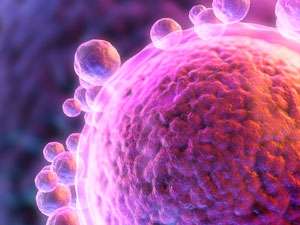Female fertility is maintained by a newly discovered molecular mechanism that freezes the cell cycle in egg cells

Genetic studies in mice have identified a molecular mechanism crucial to maintaining egg cells in a dormant state to ensure female fertility. This work by A*STAR identifies a potential method to prevent infertility when the mechanism goes wrong.
Mammalian egg cells, or oocytes, are generated in the female embryo, but their cycle is arrested during development to ensure they remain dormant. "The majority of oocytes that are not used for ovulation remain arrested for future use until menopause," explains Philipp Kaldis from the A*STAR Institute of Molecular and Cell Biology, who collaborated on the study with Kui Liu from the University of Gothenburg, Sweden. "Therefore, the arrest of the oocyte cell cycle is essential for female fertility."
Even during the growth phase of oocytes that develop through to ovulation, the cell cycle remains arrested until they are fully mature. The molecular mechanisms that keep them dormant, however, are unclear.
Previous work showed that the arrest of the oocyte cell cycle requires the continual degradation of a protein called cyclin B. Cyclin B activates an enzyme called Cdk1, so the need for low levels of cyclin B suggests that suppression of Cdk1 activity underlies the arrest of the cell cycle. Cdk1 can also be inactivated through phosphorylation, in which two phosphate groups are attached to specific sites on the protein. Kaldis and colleagues exploited this inhibitory phosphorylation mechanism to probe the role of Cdk1 in the arrest of the oocyte cell cycle.
The team used genetic manipulation to generate mice with a modified version of Cdk1 that could not be phosphorylated. In these mice, all oocytes were depleted within days of birth, suggesting that inhibitory phosphorylation of Cdk1 is essential to maintain oocytes in their dormant state. The researchers also demonstrated that inhibition of Cdk1 activity protects dormant oocytes from DNA damage, and that growing oocytes with active Cdk1 had DNA damage that caused them to die.
"Our findings show that inhibitory phosphorylation of Cdk1 is important for preserving the oocyte pool and that prematurely activating Cdk1 leads to cell death and ultimately to female infertility," explains Kaldis.
The insight also identifies a mechanism that could be targeted with drugs.
"Inhibitory phosphorylation of Cdk1 is controlled by the enzyme Wee1, the inhibiting of which could be achieved by a drug which is now in clinical trials," says Kaldis. "One could envision that this drug could be tried in cases where oocytes fail to arrest."
More information: Deepak Adhikari et al. Inhibitory phosphorylation of Cdk1 mediates prolonged prophase I arrest in female germ cells and is essential for female reproductive lifespan, Cell Research (2016). DOI: 10.1038/cr.2016.119
Journal information: Cell Research


















